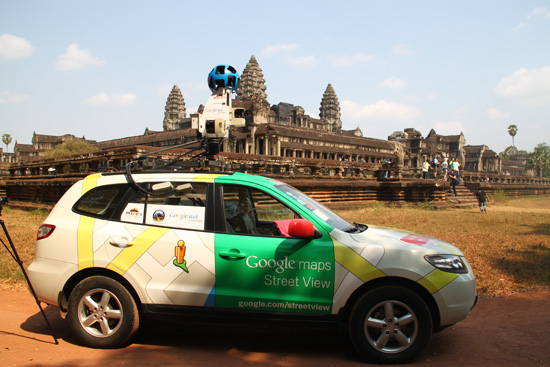Google launches Street View images of Angkor

Say cheese to the Google Car.
Street View imagery of 100 temples in the 400 square kilometre Angkor Park launched on April 3, 2014, to include iconic historic sites like Angkor Wat, Bayon and Ta Prohm. Browsing from your armchair is certainly one way to avoid the crowds.
From the project’s initiation on the ground it has taken around a year to amass and collate the data to produce the interactive Street View experience of Angkor. The ‘compass’ function means you can move your phone around to view the historical sites as if you were really there – at least as closely possible. Angkor adds to the growing list of world wonders, historically significant sites and places of natural beauty that have been mapped by Google Street View online – from the Taj Mahal to the Grand Canyon.
The digitization of the temples is impressive given the contrast to Siem Reap town which still awaits street names and, on the fringes, sealed roads.
Whilst photos can never replicate the experience of visiting in person, they might help to provide globetrotters with some travel inspiration and promote further interest in Cambodia as a tourist destination. Closer to home, the hope is that the images will help enable local people to access the temples virtually if they have not been in person and for them to be used as an educational tool.
Visitors to Angkor may well have spotted the Google Street Cars and Trekkers roaming the forest and ruins to capture the 90,000 images that form the digital collection, though before you waste hours of time you won’t be able to spot yourself (we tried). Faces are deliberately blurred in an attempt to avoid invasion of privacy.

Street View Trekker. Yes, it’s really, really heavy to wear.
With so many images and temples covered thankfully you can skip to some of the best through Google’s Street View Trek website, which includes behind-the-scenes style photos of the trekkers ‘on location’ gathering up the images. Alternatively you can check out the imagery on the Google Cultural Institute’s ‘World Wanders’ Project, where you can zoom in to incredible levels of detail, such as on Angkor Wat’s bas-relief carvings.
Still, of course, we reckon you should come visit in person if you can!












